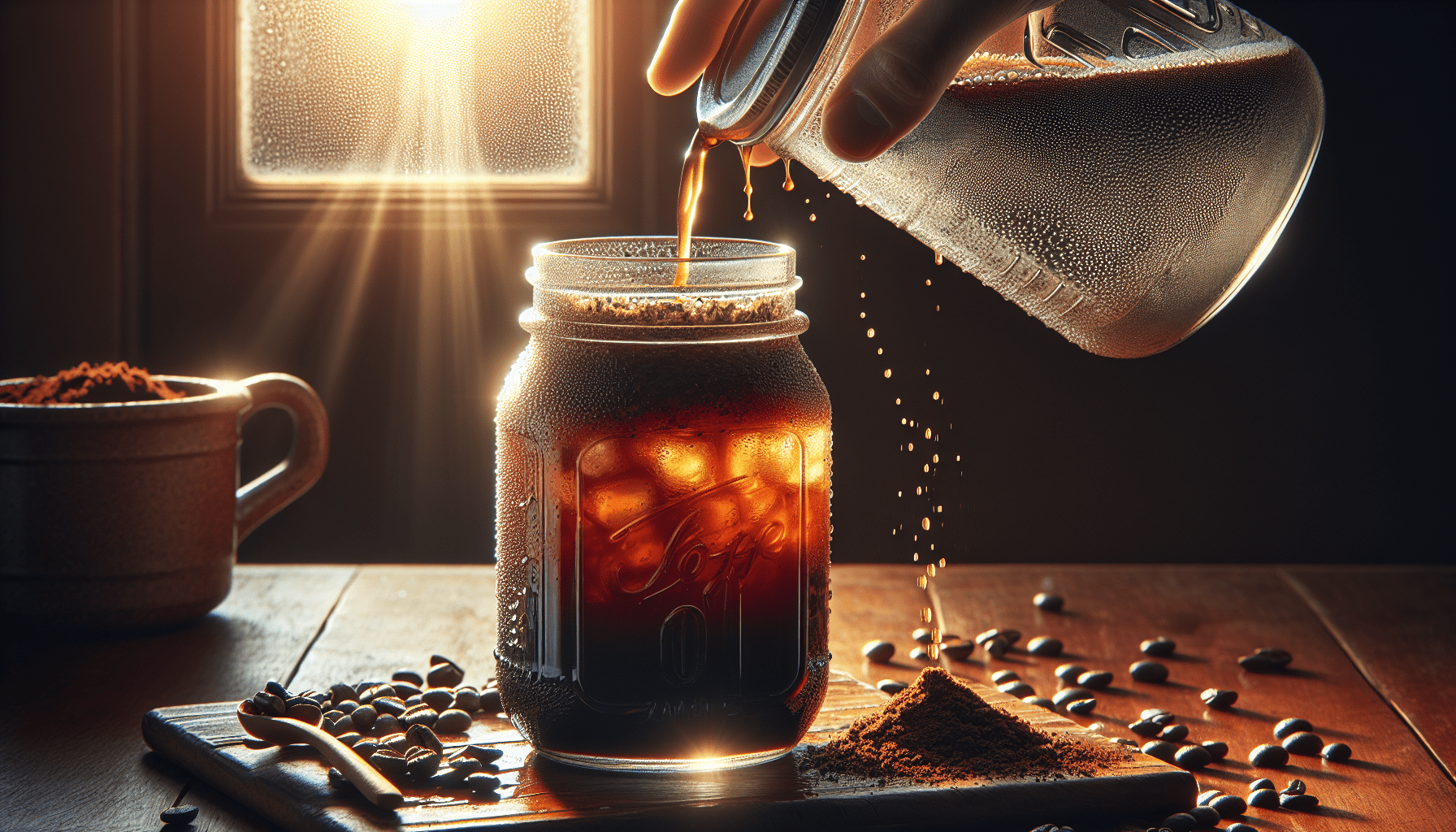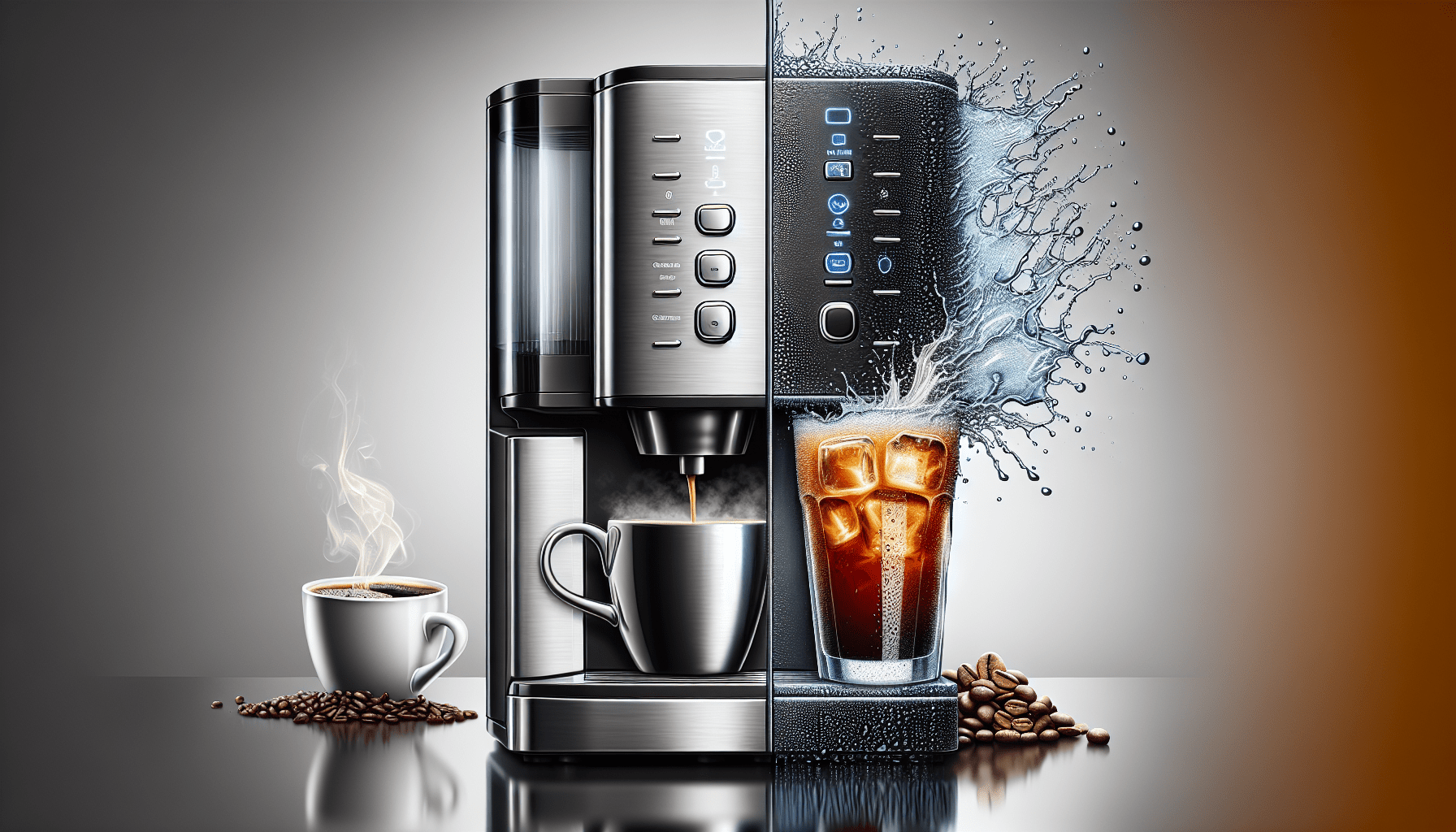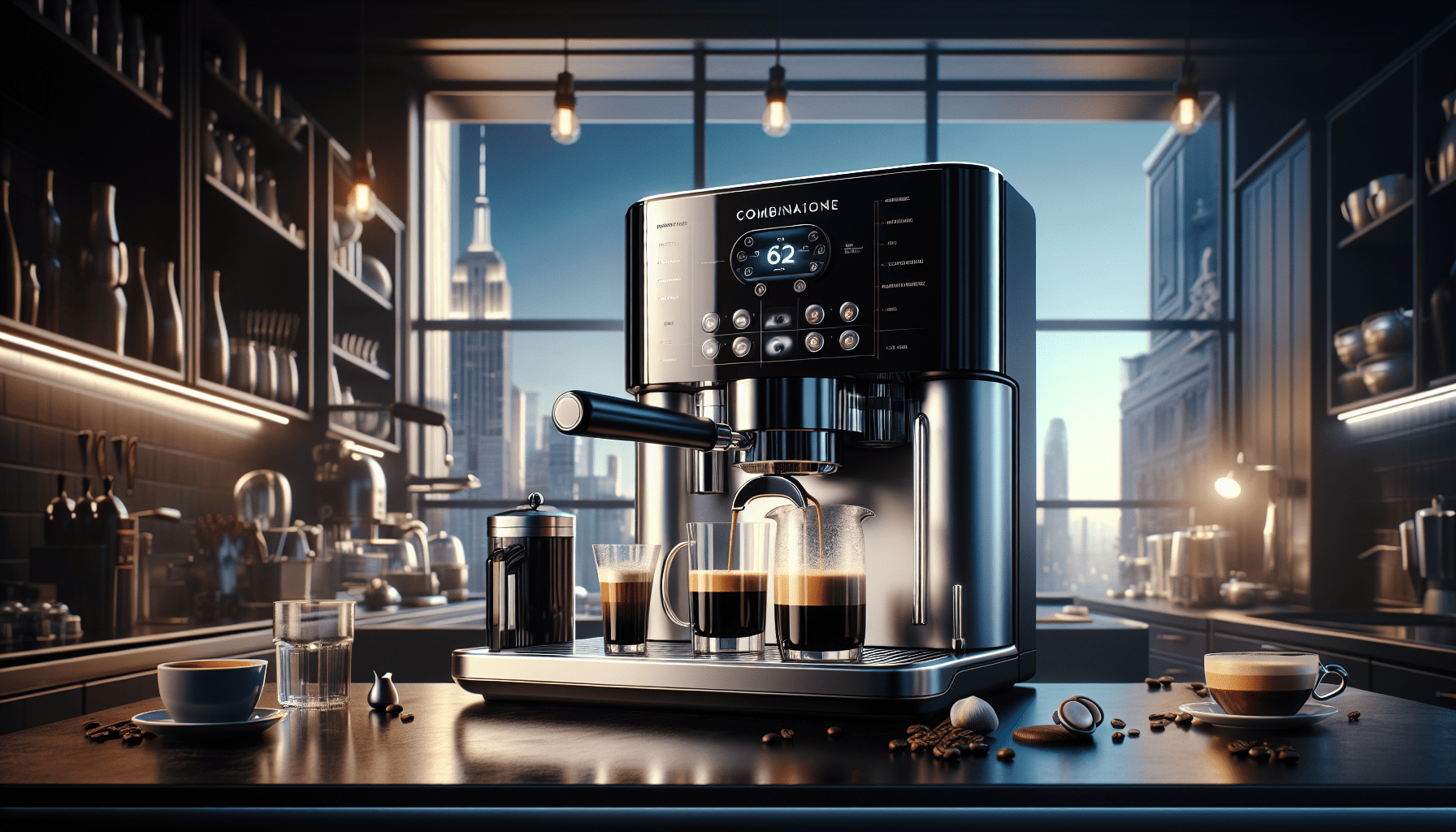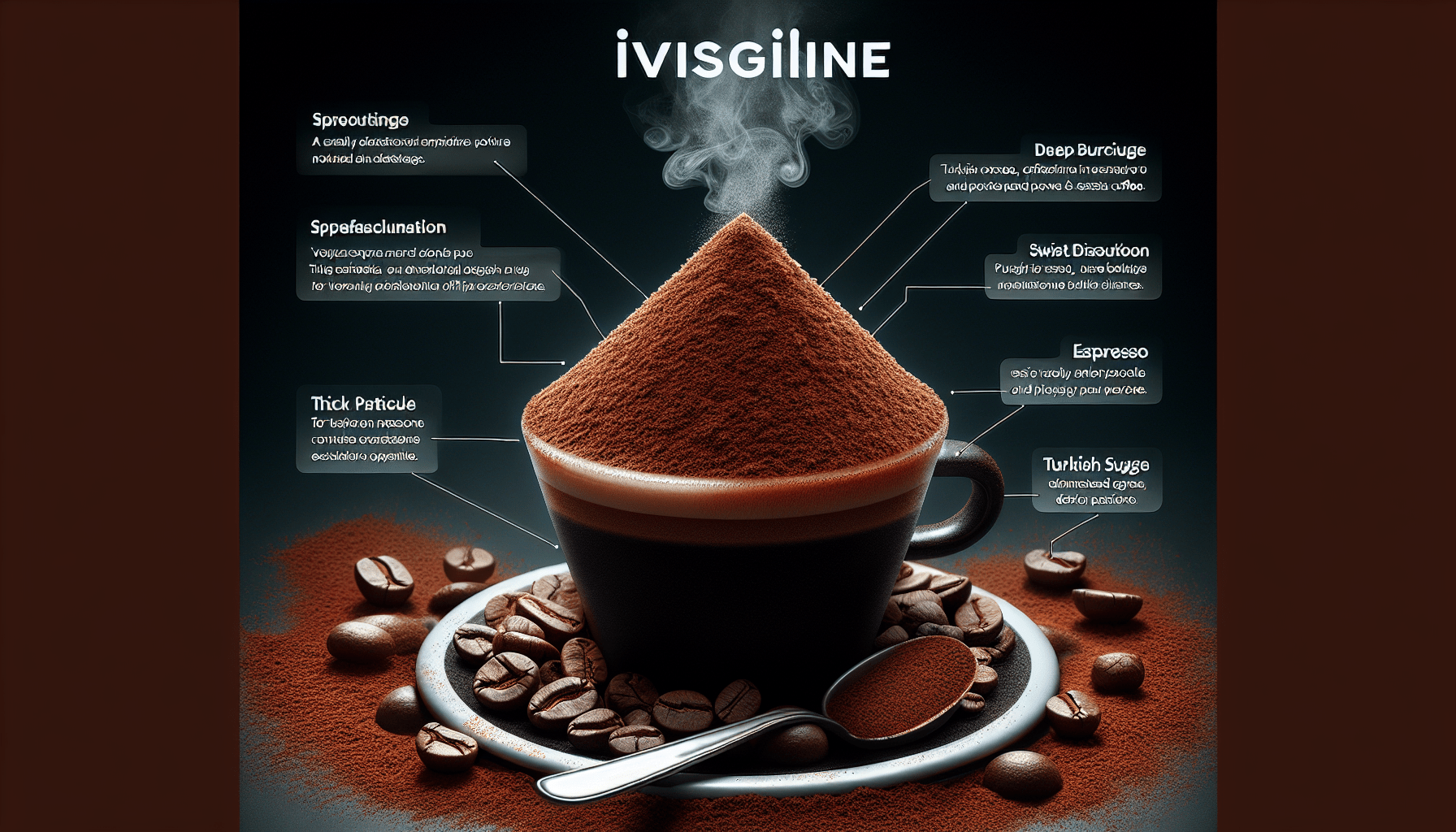I’m here to help you become a master at making cold brew coffee right in the comfort of your own home. Whether you’re a coffee aficionado or simply looking for a refreshing way to enjoy your daily cup of joe, learning the art of cold brew is a game-changer. In this article, we’ll explore the step-by-step process to achieve that smooth and flavorful cold brew that will rival your favorite coffee shop’s offerings. Get ready to unlock the secrets of this deliciously refreshing beverage!
What is Cold Brew Coffee?
Cold brew coffee is a method of preparing coffee that involves steeping coarsely ground coffee beans in cold water for an extended period of time. Unlike traditional drip coffee or espresso, which use hot water to extract flavors quickly, cold brew slowly extracts the flavors from the coffee beans over several hours. The result is a smooth and mellow coffee concentrate that can be enjoyed either cold or hot.
Process of Making Cold Brew Coffee
The process of making cold brew coffee is relatively simple. First, you’ll need to grind your coffee beans. A coarse grind is recommended for cold brew to prevent over-extraction. Once your coffee is ground, you’ll mix it with cold water in a container or jar. The ratio of coffee to water will depend on your personal taste preferences. After the coffee grounds and water are mixed together, the mixture needs to steep for a minimum of 12 hours, but many people prefer to steep it overnight for maximum flavor extraction. Once the steeping process is complete, the coffee needs to be strained to remove the grounds. Finally, you can dilute the concentrated cold brew with water or milk to your desired strength and serve it over ice.
Difference Between Cold Brew and Iced Coffee
While cold brew and iced coffee may seem similar since they are both served cold, there are significant differences in their preparation methods and flavor profiles. Iced coffee is made by brewing hot coffee using any regular brewing method, such as drip brewing or espresso, and then cooling it down with ice. On the other hand, cold brew coffee is made by steeping coffee grounds in cold water over an extended period of time. The result is a coffee concentrate that is less acidic and has a smoother, less bitter taste compared to traditional iced coffee. Additionally, cold brew coffee tends to be less diluted when served over ice, as it is already prepared at a higher concentration.
Benefits of Cold Brew Coffee
Cold brew coffee offers several benefits that make it a popular choice among coffee enthusiasts. One key benefit is its lower acidity compared to hot brewed coffee. The cold brewing process extracts fewer acids from the coffee grounds, resulting in a smoother and less harsh taste. This makes cold brew particularly appealing to individuals with sensitive stomachs or acid reflux issues. Additionally, the slow extraction process of cold brew coffee brings out a rich and full flavor profile. The resulting coffee is often smoother, with subtle notes of chocolate, caramel, and nuttiness. Lastly, cold brew coffee tends to be less bitter compared to hot brewed coffee, as the lower temperatures used in the brewing process reduce the extraction of bitter compounds. This makes cold brew a great option for those who prefer a milder and more balanced coffee flavor.
Equipment and Ingredients
To make cold brew coffee at home, you’ll need a few key ingredients and equipment. Here’s a list of what you’ll need:
- Coffee Beans: Choose high-quality coffee beans that are freshly roasted. Opt for a medium to dark roast for a more robust flavor.
- Water: Use filtered water for the best taste. The ratio of water to coffee will depend on your desired strength, but a general guideline is a 1:4 ratio of coffee to water.
- Container or Jar: Find a large container or jar with a lid that can hold the desired amount of water and coffee grounds.
- Coffee Grinder: A coffee grinder is necessary to grind the coffee beans to a coarse consistency. Freshly ground coffee will result in a more flavorful cold brew.
- Filter or Cheesecloth: You’ll need a filter or cheesecloth to strain out the coffee grounds from the cold brew concentrate.
- Optional: Flavorings: If you like to experiment with flavors, you can add various flavorings to your cold brew, such as vanilla extract, cinnamon, or even a splash of your favorite liqueur.
Step-by-Step Guide
Now that you have all the necessary equipment and ingredients, let’s go through the step-by-step process of making cold brew coffee:
- Grind the Coffee Beans: Use a coffee grinder to grind your coffee beans to a coarse consistency. Grind only the amount of coffee you’ll need for your desired batch size.
- Mix the Coffee Grounds and Water: In your container or jar, combine the desired ratio of coffee grounds and cold water. Stir gently to ensure all the grounds are fully saturated.
- Steep the Mixture: Cover the container or jar and let the coffee steep at room temperature or in the refrigerator for at least 12 hours, preferably overnight. The longer you steep, the stronger the cold brew will be.
- Strain the Coffee: After the steeping process, use a filter or cheesecloth to separate the coffee grounds from the liquid. Slowly pour the cold brew concentrate through the filter or cheesecloth into a clean container. Press down on the grounds to extract as much liquid as possible.
- Dilute and Serve: To serve, dilute the cold brew concentrate with water or milk to your desired strength. You can also add ice cubes, sweeteners, or flavorings if desired. Enjoy your homemade cold brew coffee!
Cold Brew Ratios
Determining the ratio of coffee to water is essential for achieving your preferred strength and flavor. A general guideline is a 1:4 ratio, which means using 1 part coffee to 4 parts water. However, you can adjust this ratio according to your taste preferences.
If you prefer a stronger coffee, you can increase the amount of coffee grounds or reduce the amount of water. Conversely, if you prefer a milder coffee, you can decrease the amount of coffee grounds or increase the amount of water. Experimentation is key to finding the perfect ratio that suits your taste buds.
Brewing Time and Temperature
The steeping time and temperature play a crucial role in the flavor profile of your cold brew coffee. Here are a few considerations for the brewing process:
- Steeping Time: The minimum recommended steeping time for cold brew coffee is 12 hours. However, some prefer steeping it for up to 24 hours to achieve a stronger flavor. Experiment with different steeping times to find your ideal balance of strength and flavor.
- Refrigeration vs. Room Temperature: You can steep your cold brew either at room temperature or in the refrigerator. Steeping at room temperature may result in a faster extraction of flavors but can also lead to a slightly different flavor profile compared to refrigeration. Ultimately, the choice between refrigeration and room temperature brewing is a matter of personal preference.
Storing and Serving Cold Brew Coffee
Once you’ve made your cold brew coffee, you’ll want to store it properly and serve it in the most enjoyable way. Here are some tips:
- Storing in the Refrigerator: After straining the coffee grounds, transfer the cold brew concentrate into a sealed container and store it in the refrigerator. Cold brew can typically be stored for up to two weeks, but it’s best to consume it within the first week for optimal freshness.
- Serving Suggestions: When it comes to serving cold brew, there are countless possibilities. You can enjoy it over ice for a refreshing summer drink or heat it up for a warming cup of coffee. Cold brew also works well in cocktails or paired with milk or cream for a creamy and indulgent treat. Play around with different serving methods and find your favorite way to enjoy your homemade cold brew.
- Customize with Ice, Milk, or Sweeteners: Cold brew provides a great canvas for customization. You can add ice cubes to chill it further without diluting the flavor. If you prefer a creamier taste, add milk or cream to your cold brew. Sweeteners like sugar, honey, or flavored syrups can also be added to enhance the taste according to your preference. Feel free to get creative and experiment with different combinations to discover your perfect cup of cold brew.
Tips and Tricks
To elevate your cold brew coffee experience, here are a few tips and tricks to keep in mind:
- Experiment with Different Coffee Beans: Cold brew can highlight unique flavor profiles in different coffee beans. Try experimenting with a variety of single-origin or specialty coffee beans to discover new taste experiences.
- Use a Coarse Grind: Opt for a coarser grind size when preparing coffee for cold brew. A fine grind can result in over-extraction and lead to bitterness in the final brew.
- Try Different Flavorings and Additives: Cold brew provides a versatile base for various flavorings and additives. Add a splash of vanilla extract, sprinkle some cinnamon, or try incorporating your favorite liqueur for added depth and complexity. Don’t be afraid to get creative and explore different combinations.
Troubleshooting
If you encounter any issues while making cold brew coffee, here are some common troubleshooting tips:
- Weak or Watery Cold Brew: If your cold brew turns out weak or watery, try adjusting the coffee-to-water ratio. Increase the amount of coffee grounds or decrease the amount of water for a stronger concentration.
- Bitter or Acidic Taste: A bitter or acidic taste in your cold brew may be caused by over-extraction or using a fine grind. Ensure you’re using a coarse grind, and adjust the steeping time if needed. If the issue persists, you may want to try a different coffee bean variety.
- Cloudy or Sediment-Filled Brew: If your cold brew appears cloudy or has sediment in it, it could be due to using a fine grind that easily passes through the filter. Switch to a coarser grind and try straining the cold brew more thoroughly to achieve a clearer final product.
Final Thoughts
Making your own cold brew coffee at home offers a convenient and cost-effective way to enjoy this popular beverage. With its lower acidity, smooth flavor, and versatility, cold brew coffee is a refreshing alternative to traditional hot brewed coffee or iced coffee. By following the step-by-step guide, experimenting with ratios and steeping times, and customizing your cold brew with various additives, you’ll be able to create a delicious cup of cold brew coffee that suits your taste preferences. So go ahead, save some money, and have fun exploring the world of cold brew coffee right in the comfort of your own home!




